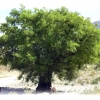Interviewer: There are three aspects of jute industry: jute cultivation, jute industry and the environmental benefits of jute. If all three aspects are taken then jute industry cannot be a sunset industry, in today’s world. So what is the reason or the force that claims jute industry as a sunset industry?
Debaprasad Bandyopadhyay: If we want to discuss this then we have to begin with a wider perspective. The wide perspective is that there is a lack of interest about the eco-friendly industry that you are speaking about, frankly speaking no one is really interested to think about it. People want to discard off any issues related to environment altogether. One can see that the agendas of political parties pay lip service to environmental issues but there is no discussion on it. In fact, at this moment two political parties (of the USA) are competing but neither of them are talking about the environment.
The first thing is, here I want to use certain phrases such as ‘anthropogenic global heating’. Anthropogenic means (chiefly of environmental pollution and pollutants) originating in human activity – increase in global temperature due to human activity. This increase in global temperature is caused due to the past 250 years of industrial revolution. This increase in temperature causes situations such as snow-caps melting leading to the rise of sea-level. As you know that temperature rise during the summer season is always stated as well above the standard temperature.
Apart from this phrase, anthropogenic global warming, there is another word that’s used, technical term – anthropocene (the period of humans). It accounts for the time human beings learned to use fire, then very slowly the industrial revolution came along with technical revolution. With industrial revolution increase in carbon emissions also started which made some people concerned as it was directly affecting us all. They started to think if instead of calling it anthropocene can this be called capitalocene, meaning establishing a correlation of the rise in temperature with capitalism.
Keeping this wider perspective in mind if one looks at the jute industry then one can notice certain things. Firstly, the cultivation of jute (paat chas). The way jute can absorb carbon from the atmosphere – we don’t pay much attention to this fact. Similarly, there is not much debate over the use of chemical fertiliser or pesticides since as you know from seeds to everything it is the multinational corporations, companies such as Monsanto are in control. From that place of control… say rice cultivation or jute cultivation or xyz cultivation…the agricultural sector is in much problem. On the whole planet there is very less fertile land left, say of around 150 billion km2 land only 20 per cent of it is as fertile as that of Singur, which takes lakhs of years to be so. We can destroy that within moments without spending much thought on it. Likewise, agriculture also has certain problems. For the case of jute cultivation let me state the problems one by one and you can compare them with the current situation, compare this anti-environment intimidation. Whoever cultivates jute or even rice, if they have to buy the seeds where GMO seeds are pushed secretively. If these GMO seeds secretly keep on coming…
I: Genetically modified seeds?
D.B.: Yes, genetically modified seeds, or even the so called BT seeds. For jute within West Bengal itself we have six different varieties of seeds…six different varieties! It is called as TD… TD1, TD2, TD3. There are some more smaller varieties of jute but these are the six major varieties of seeds we have. Due to Partition, the major jute cultivation regions went to the erstwhile East Pakistan, now Bangladesh. Due to which the raw materials…and in our side we have the jute factories of total 59 mills…this is creating a big problem, a problem such as the violence which only collaborate with the corporates.
For jute cultivation I am telling you some inventions were very much necessary, such as for retting jute plants. A farmer has to keep standing in the water to ret jute, skin deteriorates due to being in constant contact with water, mosquito bites leads to malaria. There was an invention using some bacteria for the retting of the jute, by someone named Gautam Gunaganda Banerjee, but it was not given much importance. No one wants to give much importance to these kind of inventions. The main reason for that is we are very short-sighted, we only notice how to make profit off something, we only think how fast we can make profit off it. We don’t think about the long term impact of this. The GMO seeds will perhaps produce excellent cultivation for the first two years, after that the land will become infertile which has happened with the rice seeds. With jute also the same can be possible. In tea or jute cultivation immense use of pesticide increases the problem even more.
Let me tell you more. Just as we in West Bengal has six varieties of jute, Bangladesh has six to eight more varieties of jute. They are marked as W1, W2 in such ways. Entirely, the golden fibre, that’s called. So when there are so many varieties of jute already there is no need to develop new varieties of jute by spending so much money, by researching so much and creating GMO seeds. For the cultivators the main problem is the middlemen, in plain language the stockists and distributors (aarotdar) and they are syndicate controlled. This is happening for a long time. Now these middlemen are the ones who are collecting the raw jute, which is actually the responsibility of JCI.
I: Yes, the Jute Corporation of India. The farmers can’t even reach them.
D.B.: Farmers, not just one but many of them had used a bizarre term…
I: Soru line? (Thin que)
D.B.: …for what needs to be done to reach JCI…soru line (thin que). That word is very curious! I made the proposal that the mainstream economic study should use these words otherwise these economies would not be understood. So the raw jute reaches the middlemen. The farmers are used to calculating in ‘mon’ or kg but jute is calculated in bale. Calculating in mon is almost passé now. When the farmers are going to sell jute they are actually selling it in the calculation of 148kgs = 1bale, not even 150kgs. One need to understand that actually 1bale = 180kgs.
Those 30kgs are kept off calculation. Now moving from the hands of the first stockist/middleman to the second to the third when it finally reaches the jute mill much of it is discarded/kept off the calculation there also. The real production of jute is actually very tricky to calculate; I have doubts if it even can be calculated. I am saying this… see professionally I work in the proverbial palace of statistics. Even after working in such a palace I am not able to calculate this math. As I was going to calculate how much is the actual production and how much is actually reaching the factories, I received the first shock. I discovered that a major amount of raw jute is going elsewhere instead of reaching the factories. If there is legal problem in exporting raw jute, then it is send off as threads(sutuli) or jute braids (binuni).
I: Handicrafts?
D.B.: Yes, in the name of handicrafts it is exported off to somewhere else. What is the reason for this? The factory will receive the raw material and then it will be process there, that’s what is expected. We have 59 jute mills in here. Apart from theses there are other jute mills in Bangladesh also, though they are less in number. The ownership of those jute factories was in the hands of West Pakistan, while the mills were in East Pakistan. It means that at that time the owners…if they bring the raw jute to factories and then process it and sell it they will gain profit. In this case firstly it was said…this was in 1970, this tendency has been noticed since the 70s that…jute is of no use any more, what can one use jute for? We now have polymer with us. What you know is…let me get back to the first topic that polymer is very harmful for the environment. The bio-degradability of polymer is extremely low. While creating it greenhouse gases are released which also have a damaging effect. One doesn’t need to ‘create’ jute, rather jute absorbs carbon in itself.
This lobby of the polymer industry and lobby of the textile industry have huge pressure on the jute industry. Jute is of no use – this myth was spread. However, the biggest industry today is the death industry – I have named it that (maron shilpo) – the military, warfare, nuclear bombs, missiles. This business of weapons (arms industry), may it be AK-47 or something else, the international law is that it needs to be wrapped up in jute sheet or jute bag. One cannot use plastic in there. Now to think in that atmosphere of war, a real war doesn’t take place rather a simulation of war. The real thing in this simulation of war is, what we actually saw in the Iraq war, during the Gulf wars is that a bird is drowning – the famous shoot, that death of a bird is the real truth, no matter whatever else we can call a simulation. The labourers and the farmers will die, but the simulation based arms business must go on. And the first thing needed for this death is – the jute bag, it is very essential. That is a flourishing industry, whatever is needed to continue with people’s death is looked after by the benevolent government or the benevolent corporate. Two bullets are assigned for every one of us, it is nearly 700 cr of populations and two bullets each is assigned for all.
When we are thinking of the jute industry, if I can use the raw jute in my own mill then it would have been good as I could have done much. To the mill owner, however, the process is much more haphazard; there are many workers with much division of labour to manage, the machines are getting old, moreover there is constant pressure from the cotton and the polymer industries to reduce production.
As a child I used to see my father going out to guy groceries with a jute bag in hand, now we use plastic bags instead and if we are not carrying one then we request us to give us one. This mindset is applicable on the owners as well. Doesn’t matter if one is the owner of a tea estate or jute mill. Well, for jute mills one cannot really find a ‘real owner’, they are rather non-entities disguised as renter-owners, franchise. At the end the real owner cannot be identified. If there is some problem in the jute mills, one cannot find the name of the owner at that time. So even a legal case cannot stand against such non-entities. There is no need to get into such tricky business at all. The raw jute can be bought by the middlemen or the jute mill owners and exported to another country where it can be processed. So one can get away from the labour problem, the demands of various leaders, etc.
I: So it is rather a trading business in name of jute industry?
D.B.: Yes, trading. There are serious complications in manufacturing. Let me describe one incident that took place in Hukumchand Jute Mill (Kanchrapara, West Bengal) where the workers were struggling against automation. Automation does bring some problems. We have seen assembly line of production in Charlie Chaplin’s film – Modern Times. He gave us the picture of transition that with time we will be completely dependent on machines. A cog in the machine. In one scene of the movie we see Chaplin getting inside the machine, one cannot differentiate between man and machine, an excellent shot. Such circumstances when an individual is becoming a part of machine, the labourers do not want automation but the factory machineries needs upgradation, the labourers themselves united together for the upgradation.
At this point some outsider introduced themselves to the labourers as their saviour. I term this as ‘vulgar vanguardism’. This person who has nothing to do with the jute industry, signed the document on behalf of the labourers that let the automation be carried on. This is a problematic aspect and one needs to understand the mentality behind such process. In post-Independent India, the individuals who dabbled in the jute industry, all of them were connected with other different kind of businesses. Such as the Birlas, they originally were into the business of managing agency. It is a tricky business, of lending out depositor’s money in higher interest to others and making profits out of it. From here comes the parasitic mentality where instead of extracting surplus labour one tends to be a freeloader. It is rather a type of financial bourgeoisie who wishes to make money out of money. For example, Baranagar Jute Mill had large are of land, which was turned into a kind of resort. This typical mindset behind such decisions need to be taken account of.













